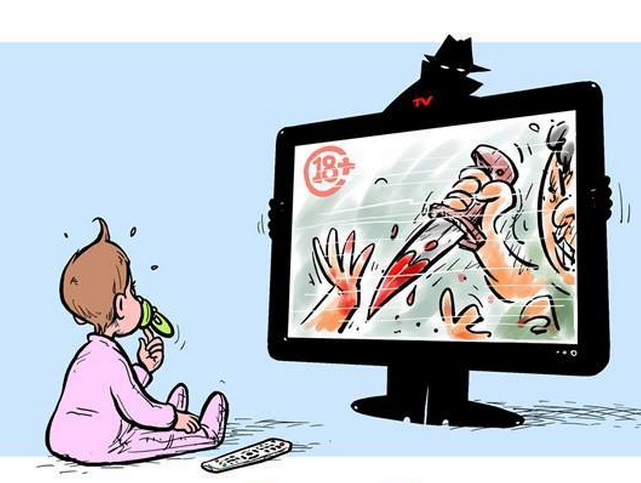Nowadays, as media exposure to children is reaching its highest peak with the rise of digital media, media violence is often used to attract audiences. As studies proceed on media violence, it is slowly being proved that the media programs that contain violence can negatively affect children’s well-being.
When children are exposed to violence continuously, their sympathy towards victims gets less intense. This situation is called desensitization. Desensitization states that when people are exposed to similar situations, the disturbing feelings get less severe. It was originally developed to treat phobia, but it is being negatively related with media violence. In 1990, Israel, conducted a research and found out that World Wrestling Federation (WWF) has caused an increase of martial arts types of acts among primary school children. These acts included poking eyes, jumping on to each other, and so on. This study showed that with repeated exposure of violence through media over time, children are likely to think that acting in a violent manner is natural.
Children develop their values, emotions and ideas through imitating surroundings, which in this case becomes media, and therefore acting antisocial becomes without noticing. According to social cognitive theory, developed by Albert Bandura, learning is preceded by observation. When this theory is applied to media violence, it can be said that children sets their model through media environment. This consequence can bring two antisocial behaviors: physical aggression and relational aggression. For example, one experiment shows that children who are exposed to Power Rangers show seven times more physical aggression, such as hitting, kicking and shoving, compared to the control group. Also, a study found that teenagers who watched relational aggression, such as social exclusion and gossip, have a higher chance of practicing such behavior. Popular television shows such as Mean Girls depict friendship struggles which develop children’s relational aggression.
Some argue that media violence is necessary because they prepare children for real world conflicts. Classic literature, such as the Black Cat, purposefully portrays violent situations stating that desensitization is essential to live a real life. By indirectly putting children in to threatening situations, it is believed that children can prepare themselves to reality difficulties to come. However, this theory cannot be applied in current world as media violence carries no moral sense, whereas violence in classic literature carries deep analysis on human psychology. Also, people can choose to be exposed to classic literature but digital media nowadays is not up to people’s will. I believe that it is now time to act on this threat to children.
References
Media and Children’s Aggression, Fear, and Altruism-Wilson
The Psychological Effects of Media Violence on Children and Adolescents-Cantor




Good statement and interesting read!